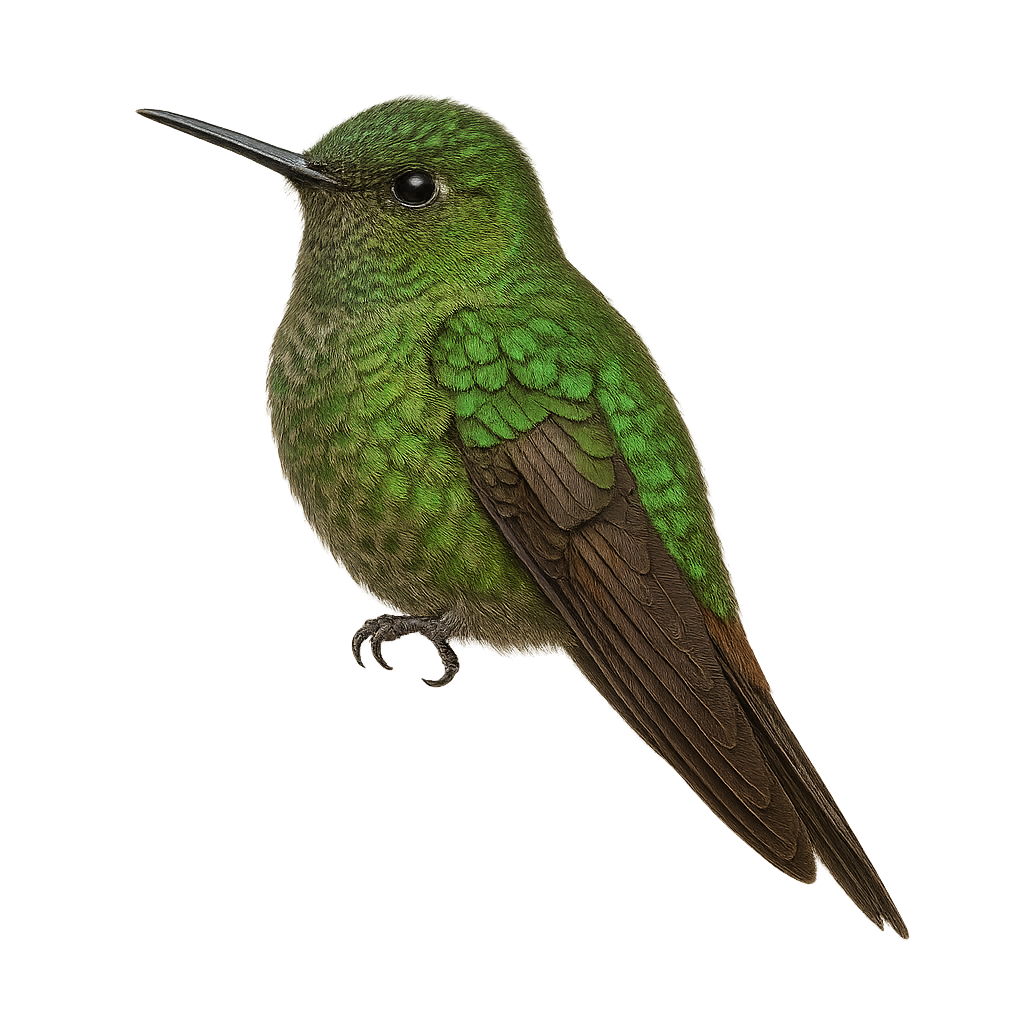Your wildlife photography guide.
Explore the bronzy inca in detail, study its behavior, prepare your shots.
Where to observe and photograph the bronzy inca in the wild
Learn where and when to spot the bronzy inca in the wild, how to identify the species based on distinctive features, and what natural environments it inhabits. The WildlifePhotographer app offers tailored photography tips that reflect the bronzy inca’s behavior, helping you capture better wildlife images. Explore the full species profile for key information including description, habitat, active periods, and approach techniques.
Bronzy Inca
Scientific name: Metallura aeneocauda

IUCN Status: Least Concern
Family: TROCHILIDAE
Group: Birds
Sensitivity to human approach: Suspicious
Minimum approach distance: 5 m
Courtship display: October to November
Incubation: 16-18 jours
Hatchings: October to December
Habitat:
Humid forests, shrublands, mountains
Activity period :
Primarily active during the day, with peak activity in the morning and late afternoon.
Identification and description:
The Bronzy Inca, or Metallura aeneocauda, is a small hummingbird native to the Andes. It is distinguished by its iridescent plumage, featuring shades of green and bronze, and its distinctive long tail. This hummingbird primarily inhabits humid montane forests and shrublands at high altitudes. It feeds mainly on nectar, which it gathers by flying from flower to flower, but it also consumes small insects to supplement its diet. Its rapid and agile flight allows it to navigate easily through its rugged habitat. Although generally solitary, it can be seen in small groups during the abundant flowering of certain plants.
Recommended lens:
400 mm – adjust based on distance, desired framing (portrait or habitat), and approach conditions.
Photography tips:
To photograph the Bronzy Inca, it is advisable to use a telephoto lens of 400mm or more to capture the details of its iridescent plumage without disturbing it. Approach slowly and maintain a distance of at least 5 m to avoid startling the bird. The best photo opportunities usually occur early in the morning or late in the afternoon when natural light highlights the bird's vibrant colors. Be patient and wait for it to perch on a branch or flower to get a sharp and well-framed shot.
The WildlifePhotographer App is coming soon!
Be the first to explore the best nature spots, track rutting seasons, log your observations, and observe more wildlife.
Already 1 430 wildlife lovers subscribed worldwide

